MSI P67A-GD65 Intel Socket 1155 Motherboard Performance Review
MSI P67A-GD65 Motherboard Up Close
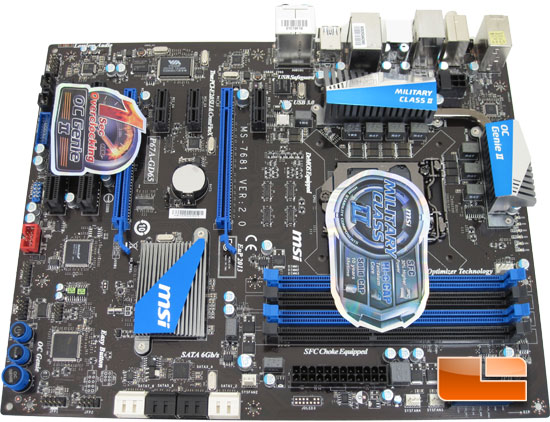
The MSI P67A-GD65 is built on a solid black PCB with black and blue DIMM slots and expansion slots. This color combination will give your system a great look if you are running a case with a side panel window. Just make sure to spend some time on cable management so you can show off the MSI P67A-GD65 at your next LAN game!
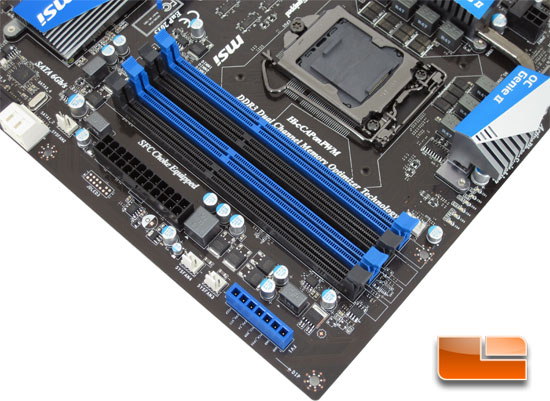
There isn’t to much that is out of the oridinary at this corner of the MSI P67A-GD65. We have the 20+4 motherboard power, there is also three 3pin pan headers here. The DIMM slots will support up to 16Gb of memory in a 4x4Gb configuration and speeds up to 2133MHz through a 21.33 multiplier for the memory. We also have the V-Check points for checking the various voltages on the MSI P67A-GD65. These include CPU Voltage, CPU VTT voltage, CPU SA voltage, DDR voltage, PCH voltage, and a pair of grounding points. Having a pair of grounding points is a nice idea because it will allow you to check multiple voltages at one time. The location of the V-Check is also greatly improved over the first board that I have come across with this. The first time I came across this was on the MSI Big Bang XPower X58 motherboard, On the Big Bang XPower the V-Check points were inline with the graphics cards, this would make it difficult to change which voltages you were able to check when running multiple graphics cards.
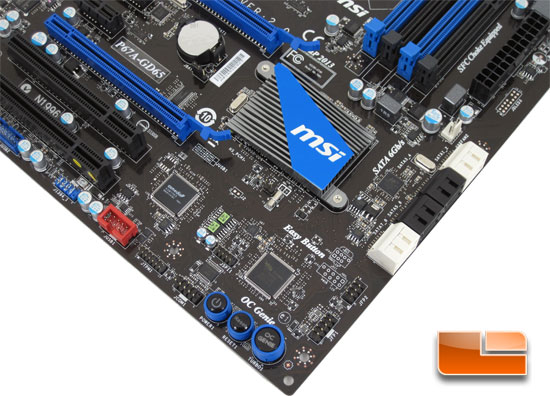
Moving on to the next corner of the MSI P67A-GD65 we first run into the eight SATA Ports. The two white SATA ports closest to the 20+4 power are SATA6 ports controlled by the Intel P67 chipset. The four black SATA ports are also controlled via the Intel P67 Chipset though they are limited to SATA3 speeds. The final two white SATA ports are SATA6 controlled by a Marvell 9128 chipset. Just past the SATA ports we run in to the pin outs for the front panel, this is the only aspect of the MSI P67A-GD65 that I haven’t been happy with. The location of the front panel pins could have been better. When running a second graphics card, it became difficult to access the pin outs. At the same time, once the wiring is done it isn’t often that you are going to have to move them. Rounding the corner of the MSI P67A-GD65, the first feature we come across is the OC Genie. Powering down the system and depressing this button will overclock your system in one second. How much you may ask? Well I guess you will have to wait and see, we gave the OC Genie a run in our overclocking section. Next to the OC Genie we have the on board power and reset buttons which are great when working outside of a case. Next to the power button is the header for the serial port with the TPM (Trusted Platfom Module) pin out beyond that. Our little red friend there is the header for USB2 with a pin out for IEEE1394 (Firewire, i.LINK) just beyond that. Just above the USB2 header is an asmedia ASM1083. South of the ASMedia 1083 is the Super I/O chip which happens to be a Fintek F71889AD
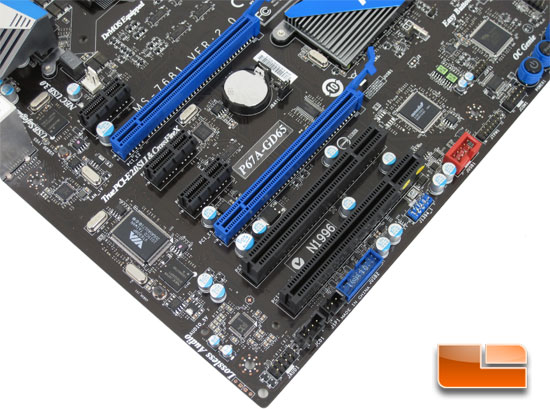
The MSI P67A-GD65 is capable of running dual graphics cards in either CrossfireX or SLI in the pair of PCIe x16 expansion slots. There is also three PCIe X1 slots as well as a pair of PCI slots on the P67A-GD65. Immediately next to the last PCI slot is the header for the on board USB3 for the expansion slot bracket or front panel of your case if it is equipped with front panel USB3. We also have the SPDIF and CD in pin outs as well as a pin out for the front panel audio. Taking a look at the chips on the MSI P67A-GD65 we start out with the Realtek ALC892 HD audio codec. The next major chip is the NEC D720200F1 USB3 controller chip. The largest chip along this edge of the MSI P67A-GD65 is a VIA VT6308P, the VIA VT6308P is the host controller chip for the IEEE1394 ports. The last chip that is sitting next to the edge of the audio jacks is the Realtek 8111E gigabit Ethernet controller.
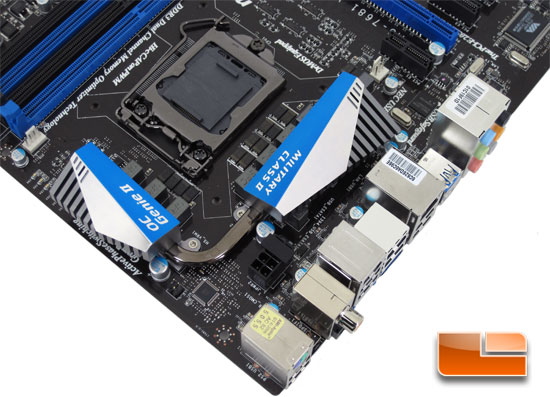
Surrounding the Socket 1155 is the Hi-c capacitors as well as the Super Ferrite Chokes. These make up a good portion of the Military Class II components. The Hi-c Cap (highly conductive capacitor). The Hi-c Caps have a life expectancy eight times that of a Solid Capacitor, and have a higher thermal stability. The core of the Hi-c Capacitors features a Tantalum Core which is a rare and highly stable material. The Chokes that are just outside the Hi-c Caps are Super Ferrite Chokes (SFC). The SFC’s use a Ferrite core that is Super-Permeable. This allows the Super Ferrite Chokes to run at a 35 degree Celsius lower temperature, have a 30% higher current capacity, a 20% improvement in power efficiency and better overclocking power stability.

The rear I/O panel features everything we have come to accept as a standard on enthusiast level boards. There is a total of ten USB ports, two of which are USB3, a pair of eSATA ports, Coaxial and optical S/PDIF out, Ethernet, six audio jacks, and a CMOS Clear button.

Comments are closed.